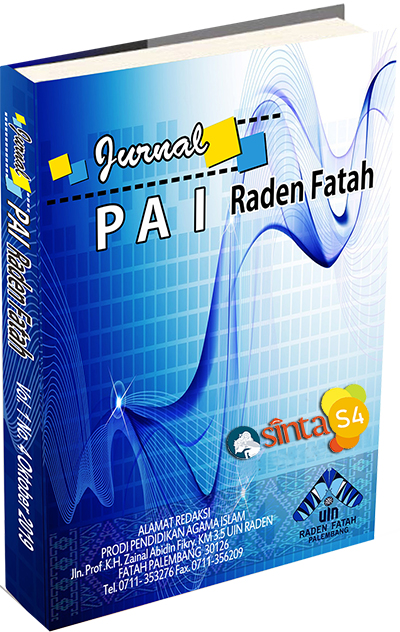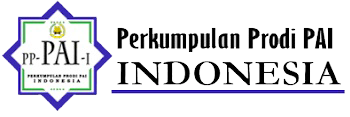Efektivitas Media Chromebook untuk Meningkatkan Hasil Belajar Peserta didik
DOI:
https://doi.org/10.19109/pairf.v7i3.28050Keywords:
Effectiveness , Media, Chromebook , Learning OutcomesAbstract
In an increasingly advanced digital era, quality education is the main foundation in creating a superior next generation and the utilization of technology in learning is becoming increasingly essential. One of them is using Chromebook media that can help teachers in improving student learning outcomes and overall learning quality. This study aims to evaluate the effectiveness of using Chromebook media in improving student learning outcomes, analyze the differences in student learning outcomes before and after the use of Chromebook and identify the factors that influence the use of Chromebook in the learning process at Taman Musi Banyuasin Junior High School, especially in PAI subjects. The method used was descriptive with a quantitative approach, involving 57 students in grades VIII and IX as samples. The use of Chromebooks was proven to improve student learning outcomes with the average student score increasing to 68.28% with the percentage of student success increasing from 31.5% before use to 92.9% afterwards. The findings show that Chromebook media is effective in improving student engagement and understanding. The influencing factors are interactive teaching methods, access to diverse learning resources, and teachers' ability to manage learning. The integration of Chromebooks in the teaching-learning process improves student learning outcomes and it is important to develop the utilization of technology to achieve optimal educational outcomes.
References
Al-Emran, M, V Mezhuyev, and A Kamaludin. “Technology Acceptance Model in M-Learning Context: A Systematic Review.” Computers & Education 125 (2018): 389–412. https://doi.org/10.1016/j.compedu.2018.06.008.
Alifa, Zairida Isra, Susanti Sufyadi, and Agus Hadi Utama. “Pemanfaatan Chromebook Sebagai Penunjang Pembelajaran Bagi Siswa Di SMPN 1 Banjarmasin.” Jurnal Teknologi Pendidikan (JTP) 23, no. 2 (2024). https://doi.org/10.24114/jtp.v8i2.3329.
Asari, Andi, Zulkarnaini, Hartatik, Ahmad Choirul Anam, and Suparto. Pengantar Statistika. Sumatera Barat: PT Mafy Media Literasi Indonesia, 2023.
Asmawati. “Pengaruh Penggunaan Media Chromebook Terhadap Minat Belajar Peserta Didik Pada Pembelajaran Pai Di Upt Smp Negeri 1 Sinjai.” Universitas Islam Ahmad Dahlan Sinjai, 2023.
Aspi, Muhammad, and Syahrani. “Profesional Guru Dalam Menghadapi Tantangan Perkembangan Teknologi Pendidikan.” Adiba: Journal of Education 2, no. 1 (2022): 64–73.
Bannister, S, and E Wilden. “The Impact of 1:1 Laptop Computer Programs on Student Achievement: A Meta-Analysis.” Journal of Technology, Learning, and Assessment 12, no. 3 (2013): 5–52.
Bebell, D, and L M O’Dwyer. “Educational Outcomes and Research from 1:1 Computing Settings.” Journal of Technology, Learning, and Assessment 9, no. 1 (2010): 5–15.
Crompton, H, and D Burke. “The Use of Mobile Learning in Higher Education: A Systematic Review.” Computers & Education 123 (2018): 53–64. https://doi.org/10.1016/j.compedu.2018.04.007.
Delgado, A J, L Wardlow, K McKnight, and K O’Malley. “Educational Technology: A Review of the Integration, Resources, and Effectiveness of Technology in K-12 Classrooms.” Journal of Information Technology Education: Research 14 (2015): 397–416.
Fadil, Achmad. “Hubungan Gaya Mengajar Guru Fikih Terhadap Prestasi Belajar Siswa.” Jurnal Intelektualita: Keislaman, Sosial Dan Sains 11, no. 2 (2022): 237–41. https://doi.org/10.19109/intelektualita.v11i2.14668.
Furio, D, M C Juan, I Segui, and R Vivo. “Mobile Learning vs. Traditional Classroom Lessons: A Comparative Study.” Journal of Computer Assisted Learning 31, no. 3 (2015): 189–201. https://doi.org/10.1111/jcal.12071.
Islam, M S, and Å Grönlund. “An International Literature Review of 1:1 Computing in Schools.” Journal of Educational Change 17, no. 2 (2016): 191–222. https://doi.org/10.1007/s10833-016-9271-y.
Keane, T, W F Keane, and A S Blicblau. “Beyond Traditional Literacy: Learning and Transformative Practices Using ICT.” Education and Information Technologies 21, no. 4 (2016): 769–81. https://doi.org/10.1007/s10639-014-9353-5.
Kresnadi, Hery, Siti Halidjah, Rio Pranata, and Husni Syahrudin. “Pemanfaatan Chromebook Dalam Pembelajaran Ipas Di Sekolah Dasar Negeri 18 Sungai Kakap.” JURNAL PENDIDIKAN DASAR PERKHASA: Jurnal Penelitian Pendidikan Dasar 9, no. 1 (2023): 1–15. https://doi.org/10.31932/jpdp.v9i1.2028.
Mardeli, Mardeli, and Sukirman Sukirman. “Kemampuan Guru Pendidikan Agama Islam Dalam Mengembangkan Metode Pembelajaran Di Smp Negeri Sekota Palembang.” Amin: Journal International Islamic Education & Knowledge Integration 1, no. 2 (2023).
Mardiyah, Sri, Dessy Wardiah, and Yessi Fitriani. “Pemanfaatan Media Chromebook Dalam Meningkatkan Hasil Belajar Menulis Teks Cerpen Siswa Kelas IX A SMP Negeri 4 Simpangkatis.” Scientia: Jurnal Hasil Penelitian 8, no. 1 (2023): 89–96.
Muir-Herzig, R G. “Technology and Its Impact in the Classroom.” Computers & Education 42, no. 2 (2004): 111–31. https://doi.org/10.1016/S0360-1315(03)00067-8.
Penuel, W R. “Implementation and Effects of One-to-One Computing Initiatives: A Research Synthesis.” Journal of Research on Technology in Education 38, no. 3 (2006): 329–48. https://doi.org/10.1080/15391523.2006.10782463.
Pertama, Direktorat Sekolah Menengah. Buku 1 Peralatan Tik Bantuan 2020. Jakarta: Repositori Kemdikbud, 2020.
———. Buku 7 Mengoperasikan Chromebook Secara Offline. Jakarta: Repositori Kemdikbud, 2021.
Pristiwanti, Desi, Bai Badariah, Sholeh Hidayat, and Ratna Sari Dewi. “Pengertian Pendidikan.” Jurnal Pendidikan Dan Konseling 4, no. 6 (2022): 1349–58.
Richardson, J W, S McLeod, K Flora, N J Sauers, S Kannan, and M Sincar. “Large-Scale 1:1 Computing Initiatives: An Open Access Database.” International Journal of Education and Development Using ICT 9, no. 1 (2013): 4–18.
Rukmana, Arief Yanto, Supriandi, and Rio Wirawan. “Penggunaan Teknologi Dalam Pendidikan: Analisis Literatur Mengenai Efektivitas Dan Implementasi.” Jurnal Pendidikan West Science 1, no. 07 (2023): 460–72. https://doi.org/10.58812/jpdws.v1i07.541.
Sung, Y T, K E Chang, and T C Liu. “The Effects of Integrating Mobile Devices with Teaching and Learning on Students’ Learning Performance: A Meta-Analysis and Research Synthesis.” Computers & Education 94 (2016): 252–75. https://doi.org/10.1016/j.compedu.2015.11.008.
Syarnubi, Syarnubi. “Profesionalisme Guru Pendidikan Agama Islam Dalam Membentuk Religiusitas Siswa Kelas IV Di SDN 2 Pengarayan.” Tadrib 5, no. 1 (2019): 87–103.
Tamim, R M, R M Bernard, E Borokhovski, P C Abrami, and R F Schmid. “What Forty Years of Research Says about the Impact of Technology on Learning: A Second-Order Meta-Analysis and Validation Study.” Review of Educational Research 81, no. 1 (2011): 4–28. https://doi.org/10.3102/0034654310393361.
Undang-Undang RI. “Undang-Undang Republik Indonesia Nomor 20 Tahun 2003 Tentang Sistem Pendidikan Nasional,” 2003.
Wiranata, Willy. “Efektivitas Penggunaan Chromebook Dalam Penerapan Pembelajaran Flipped Classroom Berbasis E-Learning Google Classroom Pada Konsep Unsur Dan Senyawa.” UIN Syarif Hidayatullah Jakarta, 2022.
Wulandari, Amelia Putri, Annisa Anastasia Salsabila, Karina Cahyani, Tsani Shofiah Nurazizah, and Zakiah Ulfiah. “Pentingnya Media Pembelajaran Dalam Proses Belajar Mengajar.” Journal on Education 5, no. 2 (2023): 3928–36. https://doi.org/10.31004/joe.v5i2.1074.
Zheng, B, M Warschauer, C H Lin, and C Chang. “Learning in One-to-One Laptop Environments: A Meta-Analysis and Research Synthesis.” Review of Educational Research 86, no. 4 (2016): 1052–84. https://doi.org/10.3102/0034654316628645.












.png)


1.png)



